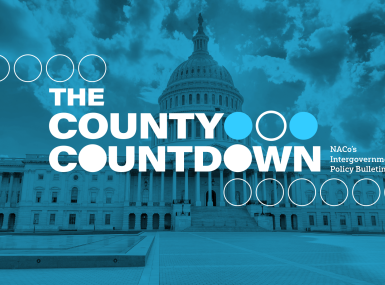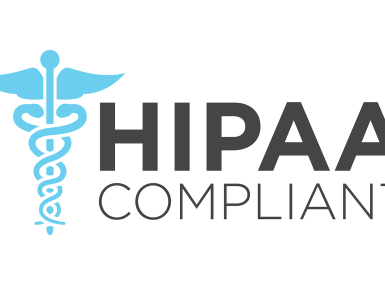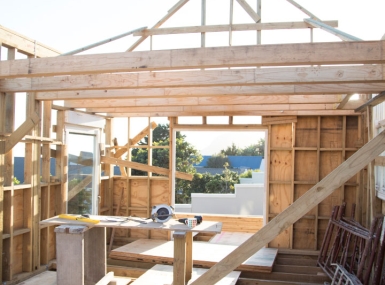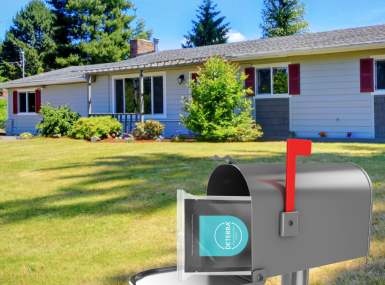Five Actions Counties Must take to Address Zoning Reform
Author

Keith Cooke
Upcoming Events
Related News

One of the fastest emerging trends among community planners is zoning reform. This has been a topic that has been gathering momentum for the last 3-5 years, and there have been three primary federal funding vehicles that have been proposed to fund this initiative. There are several reasons why this has quickly moved to the forefront of priorities for hundreds of counties.
The Need for Zoning Reform
It all starts with the fact that many zoning codes are antiquated, in that they were initially developed several decades ago to meet the needs of its residents at that time. During that time, many counties may have made patchwork changes (e.g. changes to floor area ratio, increases in setbacks, proximity of development to wetlands, etc.) to the zoning code to fit changing demands from residents, administrators, and developers. But these patches are only temporary fixes and don’t address the need for reforming codes to meet modern expectations of its residents.
Consequently, this makes it difficult (at best) for counties to provide the kinds of housing options that its existing and prospective residents need. Single-family housing was in greater demand in the 70’s and 80’s than it is today, as the size of the average household decreases. Many residents, particularly those younger and single, either aren’t looking for, or cannot afford, these types of homes and would prefer more walkable communities with denser concentrations of housing and access to retail, restaurants, transit, and so forth.
Finally, dated ordinances with restrictions on newer types of housing directly impacts housing affordability, as we are already seeing in communities of all sizes across the nation. This severely limits housing options for lower and middle-income households. By extension, this also adversely affects economic mobility. People that cannot live close to their work or the services they need may be forced to move farther away to afford housing, which in turn increases commuter traffic and limits their economic growth opportunities.
Geographic Approach to Zoning Reform
There is little doubt that changing development parameters is going to be a sensitive topic for residents, developers, and county leaders, so zoning reform requires a data-driven approach. It will be essential for planning professionals and county leaders to embrace a geographic approach to zoning. This includes:
- Understanding neighborhood characteristics
The main driver for zoning reform is that neighborhoods have changed over the last several decades. Since that’s the case, having a detailed understanding of the current characteristics of these neighborhoods is essential.
ArcGIS Business Analyst Web App provides access to about 2,000 demographic, socio-economic variables, workforce, and business variables to deliver detailed insight into the characteristics, market trends, and needs of neighborhoods down to the block group level.
- Deriving intelligence from business systems
Nearly every county leverages one or more business systems to record and monitor developments. This is usually a permitting system, and while not everyone in the county directly uses this system, every planner and county administrator needs at least an overview of the data that it holds.
ArcGIS Insights generates business intelligence from existing community development systems, such as permitting, to identify trends and patterns in development over time to show where the greatest need for reform exists. It acts as a complement, not a replacement, to these systems.
- Promoting sustainable policy
Leaders in county government are expected to create, promote and drive zoning and development policies that benefit their residents by meeting their needs. More than ever, this requires a data-driven approach. Sometimes knowing where to start for this process can be challenging in and of itself.
Esri Maps for Public Policy is a free resource within the Living Atlas that includes curated content focused on policy initiatives, such as housing, economic mobility, disadvantaged neighborhoods, and more.
- Supporting civic inclusion
As mentioned earlier, zoning reform is likely to spawn some heated debate. In today’s climate, being sure that all your residents have a way to learn and provide feedback about proposed zoning changes is more essential than ever. Simply relying on public hearings and town hall meetings won’t provide the inclusivity and feedback that county leaders need.
ArcGIS Hub opens the door to all residents and stakeholders to not only be better informed about specific initiatives, but also provide a mechanism for direct feedback about these plans using maps, surveys, videos, and more.
- Empowering scenario planning and design
The geographic approach to zoning reform will require creating, analyzing, and comparing multiple scenarios. In the past, this would have required costly outsourcing to a consulting firm. Today, planners can use GIS to create and measure these scenarios to find the optimal zoning changes down to a fine level of detail, including setbacks, building height, dwelling unit density, housing affordability, and more.
ArcGIS Urban is a web-based tool that enables planners to play out different scenarios for proposed zoning changes. Planners can instantly see the potential impact of a zoning change, including changes in population, increases in jobs, impact on traffic and utilities, and financial impact. These plans can be compared with others to identify the path forward that best meets the needs of the community.
Reforming a zoning ordinance can be a daunting, time-consuming task. GIS provides the essential tools that planners, residents, and county leaders need to take a data-driven approach to zoning to create a more sustainable, equitable, and thriving county.
Post Sponsor

Related News

House lawmakers introduce bipartisan legislation to support World Cup local transportation needs
On December 2, U.S. Reps. Rick Larsen (D-Wash.-02) and Burgess Owens (R-Utah-04) introduced the Transportation Assistance for Olympic and World Cup Cities Act (H.R.6348), a bipartisan effort to strengthen local transportation systems in communities preparing to host major international sporting events

County Countdown – Dec. 1, 2025
Every other week, NACo's County Countdown reviews top federal policy advocacy items with an eye towards counties and the intergovernmental partnership.

Unlocking AI Starts With Strong Data Governance
Strong data governance is the foundation of trustworthy AI in government. When Agencies inventory, clean, unify and steward their data, they unlock better decisions, improved services and stronger public trust.




















